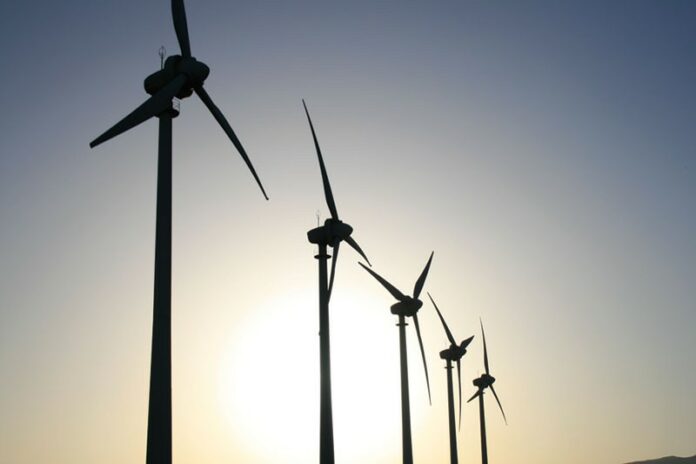As towns across Sonoma County consider breaking with PG&E and forming Sonoma Clean Power, the energy sources that would light and warm local homes—as well as the company that would supply them—are still unknown.
Last year, Sonoma County’s water agency began studying the feasibility of creating a Community Choice Aggregation, or CCA, in which local governments would buy power from a supplier of their choice and sell it to residents in their jurisdiction. Since AB 117 was passed in 2002, Marin and recently San Francisco have formed CCAs, using PG&E’s lines while purchasing energy elsewhere. Consumers living in the area Marin Clean Energy supplies are given the chance to opt out and stay with PG&E, and San Francisco is planning a similar policy for its fledgling organization.
But although the two CCAs supply an energy mix generated partly from renewable sources to their customers, both have faced scrutiny for trading one gas and electric giant with a dubious environmental record for another: Shell. Marin Clean Energy signed a five-year contract with Shell Energy North America in February of 2010, and San Francisco’s board of supervisors approved a four-and-a-half-year contract between the same power leviathan and CleanPowerSF in September. Marin activist and publisher of Solar Times Sandy LeonVest has been one of the most vocal North Bay critics of this alliance with the multinational corporation.
“SENA is a wholly owned subsidiary of Royal Dutch Shell, a dues-paying member of the democracy-busting American Legislative Exchange Council (ALEC) and one of the world’s worst polluters and human rights abusers,” she wrote in a recent edition of her newsletter.
In an article last year, the Bohemian examined Sonoma County’s landscape and concluded that between the coast, the geysers and the thriving agricultural community, this region’s CCA could be different. California’s Renewable Energy Secure Communities thought the same thing in 2009, when it awarded the water agency a $1 million grant to research geothermal heat-pump technology and treated wastewater, solar voltaic and wind power generation. Whether or not other counties are able to truly go local for their heat and electricity, it’s a real possibility for Sonoma.
According to Sonoma County Water Agency deputy chief engineer Cordel Stillman, the agency’s board of directors has set the goal of locally generating one-third of the county’s total power, or 120 megawatts at peak, by 2030, if a local CCA continues to go forward.
Local advocacy nonprofit Climate Protection Campaign is on the steering committee of Sonoma Clean Power, and according to its website, it would like to see over half of Sonoma’s power gleaned from local sources.
“We want to get local power as soon as possible and we think there is potential to get much more locally, but it will take a lot of effort between here and there,” says the campaign’s communications director Brad Heavner. The CCA, which is currently being pitched to local governments around Sonoma County, has to be stable financially to even get to that 2030 date, he points out.
Sonoma’s power agency would likely require each household to pay between $4 and $10 more each month over the next 20 years, according to the water agency’s feasibility study (though Paul Fenn, who wrote the 2002 law permitting CCAs, believes a zero-rate increase is possible). There’s a risk that if too many people opt out of the CCA, it will have to sell its excess power and take a loss, the study concludes. Part of the financial picture will include the company chosen to supply Sonoma Clean Power’s energy, and if it comes up with a competitive price, that company could be Shell, according to Stillman.
“What is going to be palatable for the consumer, that’s going to be a big concern for us,” he says.
Nine potential suppliers, including Consolidated Edison, Calpine and Goldman-Sachs, have been interviewed by the agency, Stillman wrote in an email, adding that the agency has yet to receive formal proposals and supplier price ranges.
According to Charles Sheehan, communications spokesperson for CleanPowerSF, the new agency ended up choosing Shell partly because of its green portfolio, which includes state-certified renewable energy generated from solar panels and wind turbines, and partly because “it’s a credit-worthy institution. They could make credit assurances to the city so it wouldn’t be put at financial risk.”
“The less we can rely on long-term contracts, the better,” says Heaver, speaking about a potential liaison with the same oil company. “But right now it’s all about the numbers.”
However Sonoma County’s CCA could bridge the gap between PG&E and locally sourced power, Heaver feels confident that it will happen. While he says there haven’t been any guarantees yet that geysers, wind and solar will be the future of Sonoma’s CCA, he says the job creation that could come with building plants and turbines is important to the steering committee and the Sonoma County Water Agency’s board.
“We have an entity that is very concerned about local power,” he says.











